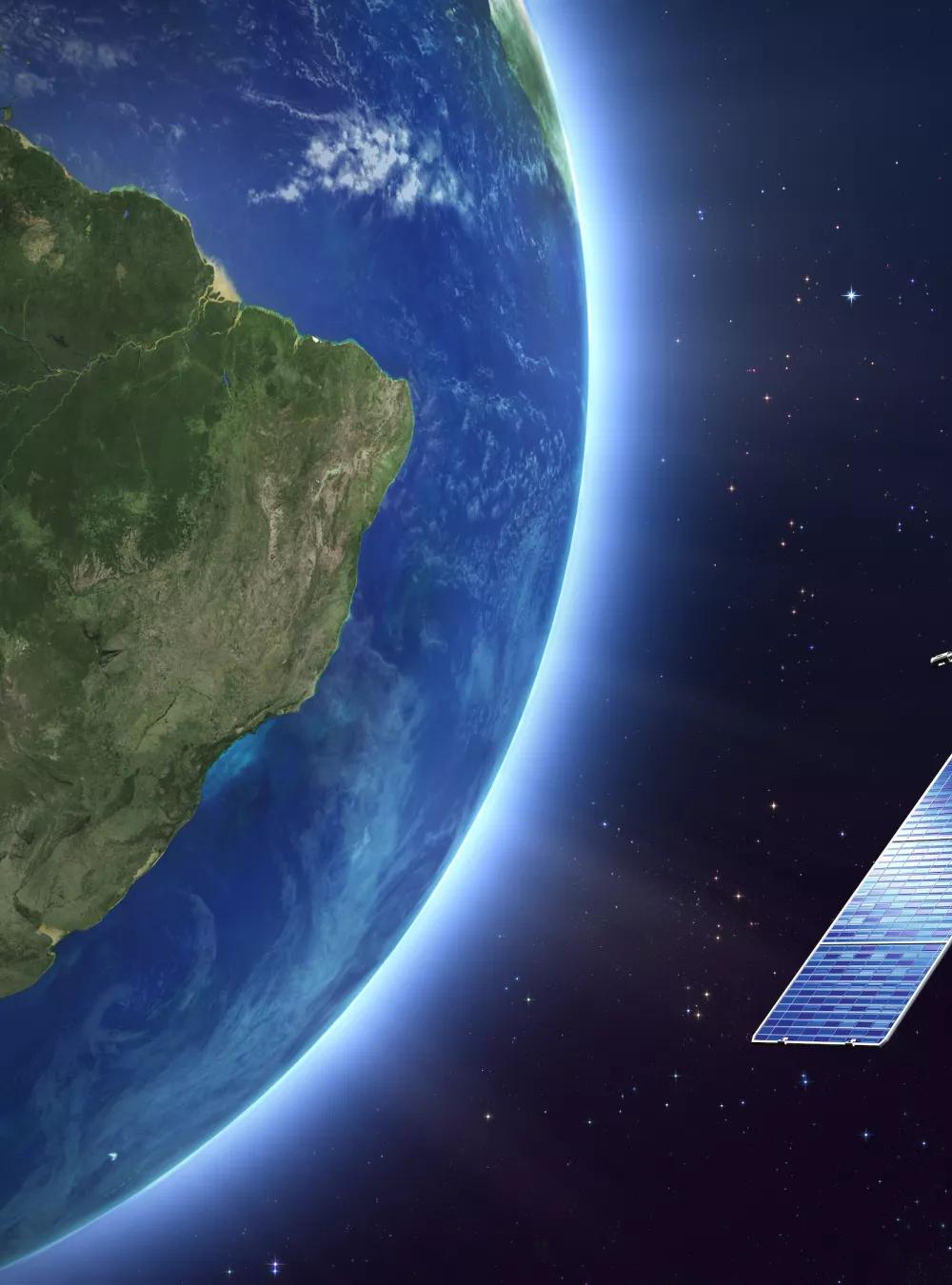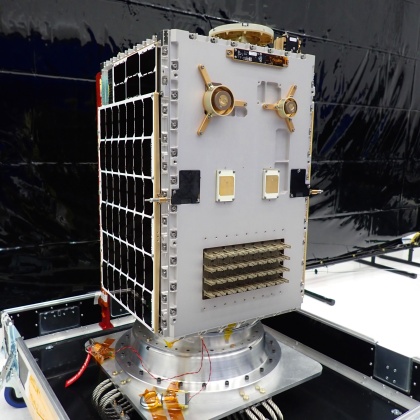A small satellite in low Earth orbit (LEO) carries a MITRE experimentation platform. The technology it hosts enables affordable, flexible in-orbit testing for U.S. government communications capabilities in national security and other domains.

In Space, MITRE Lab Creates Economical Opportunities to Improve Government Satellite Capabilities
Reaching outer space has, in some ways, become more accessible than ever. And yet, a small satellite mission costs somewhere between $1 and 12 million. Between the price tag, the chances of equipment failures, and the challenges from increasing space traffic, launching satellites is still risky business.

MITRE’s Space Experimentation Lab—or M-SEL—aims to reduce risk, increase speed of innovation, and offer an efficient and shared testing resource.
We launched the core of M-SEL, a small LEO satellite, on March 14, partnering with Astro Digital, the company that designed and built the system. The lab in space will facilitate flexible, economical experimentation for radio-frequency communication missions.
As a not-for-profit operator of federally funded research and development centers (FFRDCs), we work at the intersection of government and industry—catalyzing innovation while managing risk on both sides.
"M-SEL brings huge potential and is a critical part of our forward-looking research efforts," says Chris Niessen, director of MITRE’s independent R&D program, which developed the capability. "Working with Astro Digital, we've successfully put a platform into space that enables the community to experiment prior to making large government investments."
Astro Digital CEO Chris Biddy says, "We're excited to collaborate with MITRE to help reduce risk to government missions and offer a fluid platform to test out different concepts in orbit."
One Innovation Platform, Multiple Impactful Outcomes
With advances like Astro Digital’s mission-as-a-service model, industry continues to bring space-mission costs down. Still, the rate of small satellite launches is only expected to rise—making efficient resource usage more important than ever.
The U.S. Defense Department, for instance, increased its spacecraft deployment by 86% last year. Given the uptick, our government must be able to readily and affordably test capabilities in space.
M-SEL's primary mission payload is an experimental antenna array based on MITRE's patented, award-winning Frequency-scaled Ultra-wide Spectrum Element, a.k.a. FUSE™. In collaboration with the Defense Department, our researchers designed the FUSE antenna not to compete with industry but to address a gap in the commercial market. Less expensive, easier to manufacture, and mechanically robust, its extra-wide bandwidth design makes it easy to switch frequencies and avoid jamming and congestion, which are common problems.
We’re excited to collaborate with MITRE to help reduce risk to government missions and offer a fluid platform to test out different concepts in orbit.
Take LEO satellites, for example. The speed at which they move makes them particularly susceptible to doppler frequency shifts that can disrupt missions. Access to efficient on-orbit testing enables development of more-resilient satellite communication.
Powered by FUSE, M-SEL can be reprogrammed on orbit to provide experimentation opportunities extending across government, industry, academia, and other FFRDCs. This also enables timely response to new priorities and iterative testing for rapid improvements based on lessons learned.
Jamie Hill, one of FUSE's original designers, says, "FUSE enables a single satellite to be used for multiple purposes—from agile communications to serving as a test bed for broader risk-reduction experimentation."
MITRE owns the intellectual property we create and works with our government sponsors to identify the best pathways to impact with their usage rights. We can transfer technology directly to the government, license it to industry so they can support federal agencies, and license it to industry for both commercial and government use.
As we work to catalyze innovation—not commercialize products—we license our technologies non-exclusively. This ensures the government is never charged twice for IP it helped fund.
The bottom line: As MITRE leverages industry partnerships to scale our impact, we're adding even more efficiency and flexibility for the federal government—potentially saving users millions of dollars and protecting taxpayer investment.
Multitasking Resource for Government Sponsors
Over the past decade, FUSE has been licensed by industry to meet the mission requirements of several government agencies. One company, Optisys, 3D printed the FUSE antenna that flies M-SEL. Now space-qualified, it's gaining flight heritage (a record of proven performance) with this application.
From space, FUSE connects to a second component of the lab, a ground station at MITRE's Bedford, Mass., campus. The ground station downloads data from FUSE, critical information that can enable new research and innovations. The third part of M-SEL, a physical space in Bedford, contains the core components of the antenna that can be used to conduct dry runs of experiments before they're uploaded to the satellite.
By fostering early experimentation and a clearer understanding of mission needs, the lab helps empower delivery of more-targeted solutions with greater confidence.
In planning for M-SEL to run for the next five years, we built on MITRE experience and resources from the last decade. For example, project leader Eric Renda and other company experts repurposed equipment such as antennas and radar gear. The result? An efficient, custom ground station to support the space lab's activities.
"We used assets from past experiments to rapidly enable this new capability," Renda says. "I'm looking forward to seeing how it will further our partners' goals in the national security space and beyond."
Join our community of innovators, learners, knowledge-sharers, and risk takers. View our Job Openings and Student Programs. Subscribe to our MITRE 360 Newsletter.